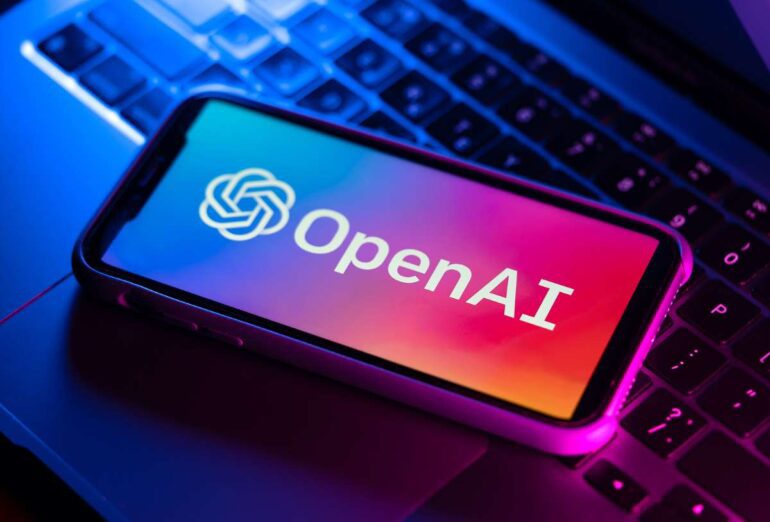TL;DR:
- OpenAI strategically leverages network effects to solidify ChatGPT’s market dominance.
- Network effects amplify a product’s value with each user, creating a potent competitive advantage.
- ChatGPT initially lacked network effects, but OpenAI introduced plugins to foster them.
- Two key players, users and developers, drive network effects for ChatGPT.
- OpenAI’s strategy includes the GPT Store and a revenue-sharing scheme to sustain network effects.
- This approach positions OpenAI to control the future of AI assistants.
Main AI News:
OpenAI, a pioneering force in the realm of large language models (LLM), has meticulously formulated a business strategy that revolves around harnessing network effects to safeguard ChatGPT’s position in the market. The unveiling of ChatGPT marked a pivotal moment, illuminating the vast potential of LLMs in the mass market.
ChatGPT has achieved unprecedented growth, emerging as the fastest-growing application in history. This meteoric rise has sparked a surge of interest in LLMs, prompting a flurry of competitors, including open-source alternatives, to enter the arena. To fortify its foothold in this burgeoning market, OpenAI has employed a multifaceted approach.
One key aspect of OpenAI’s strategy is the introduction of innovative features and the provision of free access to less advanced models. This strategy serves to broaden its user base and strengthen its competitive edge. A pivotal moment occurred at the recent DevDay conference when OpenAI unveiled its latest strategy: leveraging network effects to dominate the LLM market.
The Power of Network Effects
Network effects are a phenomenon where a product or service’s value amplifies with each new user. Think of a messaging app – its utility increases as more of your contacts join the platform. This is a classic example of a direct network effect. Yet, some network effects are more intricate, involving various types of users. For instance, in online shopping platforms, merchants are inclined to sell where potential customers gather. Customers, in turn, flock to platforms that offer the goods they desire. This interdependence creates a formidable barrier for new entrants, as witnessed by giants like Amazon. This is a two-sided network effect.
Creating these network effects necessitates speed and market capture before rivals can establish a foothold. This often requires aggressive growth strategies, even if they incur financial losses initially. The goal is to firmly establish these network effects, rendering it exceedingly challenging for competitors to erode market share. Network effects stand as one of the most potent “moats” safeguarding a company’s market position.
Network Effects for ChatGPT
In their fundamental form, large language models like GPT-4 do not inherently possess network effects. Each user’s interaction with the model is self-contained, unaffected by others. This absence of network effects renders it easy for users to migrate to alternative LLMs, offering comparable features, accuracy, or better pricing, potentially reducing LLMs to commodities.
Initially, OpenAI held an advantage due to the superior performance of its models and substantial financial backing, thanks in part to Microsoft. This allowed OpenAI to invest significantly in model improvements and offer free access to some models, drawing in a broad user base.
However, without a protective “moat,” OpenAI faced the risk of losing market share to competitors. OpenAI took steps to cultivate network effects by introducing ChatGPT plugins in March. This innovation enabled developers to seamlessly integrate ChatGPT into their applications, expanding the model’s utility.
Now, there are two pivotal players in this ecosystem: users and developers. As users discover more applications for LLMs, they seek service providers with a broader array of tools. Simultaneously, developers crafting plugins or LLM tools gravitate toward platforms with larger user bases. This synergy lays the foundation for network effects reminiscent of the Apple App Store and Google Play Store.
Sustaining Network Effects
Creating and sustaining network effects is an ongoing endeavor. OpenAI must continuously enhance its models and introduce new features to attract more users and developers. To complete the network effect loop, OpenAI revealed two significant features at the DevDay conference: the GPT Store and a revenue-sharing scheme.
The GPT Store provides developers a platform to offer their LLM apps to ChatGPT users, whether as app integrations, virtual assistants, or other innovative applications. This strategic move mirrors the proven pattern of the Apple App Store and Google Play Store.
The revenue-sharing scheme offers added incentives for developers to remain within OpenAI’s ecosystem. Its success hinges on users’ willingness to pay for GPT assistants. With OpenAI simplifying the creation of personalized GPTs, it remains to be seen how users will value pre-built GPTs versus crafting their own.
OpenAI may also explore limited-duration incentive programs, incentivizing developers to create GPT agents on the platform. As the platform attains critical mass, it will organically attract more users and developers, akin to the App Store. Additionally, this can trigger data network effects, granting OpenAI exclusive access to high-quality user interaction data for superior model training. If executed successfully, this strategy could cement OpenAI’s dominance in the LLM market.
The Future of AI Assistants
The ultimate form of the AI assistant experience remains uncertain. Will it exist as a seamlessly integrated browser-based assistant across all applications? Or will it manifest as an AI agent embedded within every app interface? Perhaps it will take unconventional forms, such as Humane’s wearable AI Pin or specialized devices like the one developed in collaboration with former Apple chief designer John Ive.
While these questions linger, one thing is clear: OpenAI, backed by Microsoft, strategically positions itself to exert control over the entire AI assistant stack. With a well-crafted network effects strategy, it stands poised to shape the future of the LLM market.
Conclusion:
OpenAI’s adept use of network effects not only safeguards ChatGPT’s market position but also establishes a formidable barrier for competitors. As the network effects continue to evolve and strengthen, OpenAI’s control over the AI assistant market appears poised for long-term success, reshaping the industry landscape.

